
The reality of done photography is that you aren't behind the camera–not literally anyway. You're looking at a screen as much as a quarter of a mile away. While a smartphone provides a reasonable approximation of the drone camera image, it's also carrying a great deal of information. Using a larger tablet that you may already have is an affordable way to improve your drone photos.
The Photographer and Gear Synergy
Have you ever attended a corporate retreat or team-building exercise for your job? Or maybe it happened to you at freshman orientation. Organizers of such events like to traipse out into the woods, away from traffic, cell phone towers, and other distractions. You stand awkwardly with people you barely know–or only know from the office. The organizer gives your group a seemingly meaningless task, like building a pyramid of stones. Then you're given some arbitrary rules to accompany this task, like half of your group can only lift the blue rocks and half of you can only lift the red rocks or some such foolishness.
You might remember these activities as utter nonsense. You're right, the task and the rules are nonsense, of a sort. But they serve as a catalyst. A backwoods visual McGuffin to motivate your co-workers or classmates to accomplish a goal. The result is not a geometrically awe-inspiring rock pyramid to end all rock pyramids. The goal is the cooperation itself. The pyramid is just a visual reminder of the lesson that cooperation, fueled by communication, leads to better results than an individual could accomplish alone.
At least, I hope that's the lesson. Maybe somebody in your HR department has a cousin in the rock pyramid business. The word in the business world is synergy. It describes streams of operations that, when combined, yield better results for the organization as a whole.
The Rise of the Smartphone
As photographers, we often pursue our craft with solitary determination, and only rarely on others. But even then, we still seek synergy. Mostly gear synergy. Gear synergy is seeking out gear that is technically compatible or practically useful in working with our preexisting gear. You don't have to look any further than the market for adapting traditional DSLR lenses to the mirrorless camera world to realize that photographers' desire for gear synergy drives much of the photo gear market.
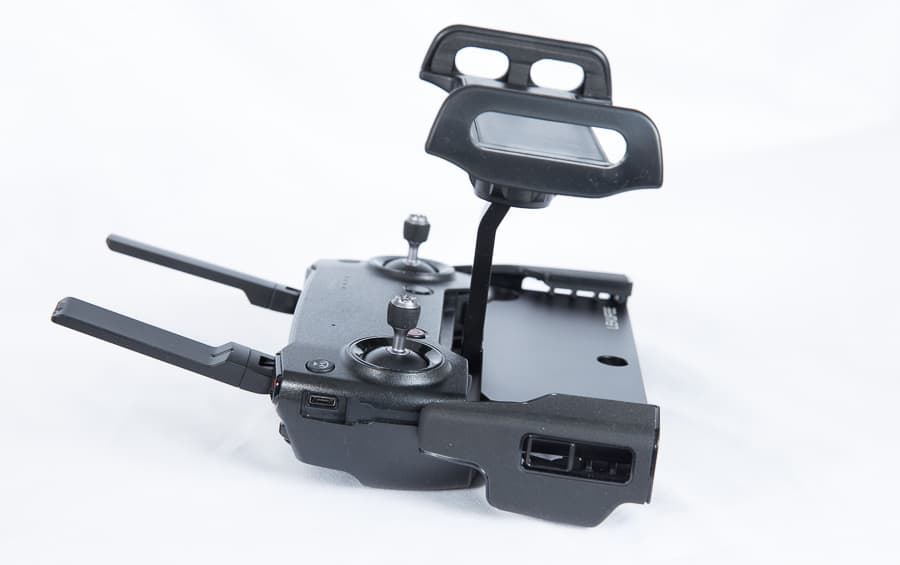
Drone is Where the Art Is
It's no wonder, then, that venerable drone manufacturer DJI makes great use of smartphones to expand the capabilities of modern drones. At the same time, every capability that DJI can push to the smartphone is one less feature it needs to manufacture a hardware-based solution for–allowing it to offer more sophisticated drones at a lower price point.
Smartphones are ideal for delivering flight data, a live-view screen of the drone's gimbal-assisted camera, video and still camera settings, signal strength, current and historical flight path data, and more. If you've seen the DJI Go 4 app in action, it gives you an appreciation of how far we've come in computing and input capabilities of smart phones since the release of the first iPhone in 2001. (When I first bought a smartphone in 2005, I thought the Zippo lighter app was the single most impressive technological marvel of all time and belonged on display at a World's Fair). We've come a long way.
The Tale of the Tablet
But all that information can be pretty daunting on the tiny real estate of my smartphone. It's not just a lot to think about–it's a bevy if information to look at, too. Below is the in-flight display of the DJI Go 4 app on an iPhone 6s.
While the iPhone fits nicely into DJI's handheld controller, a larger display–in my case an iPad Air 2–does not. That's where third party manufacturers have come forward to make larger displays that you already own compatible and useful for your DJI drone. I've been using the Lekufee Bracket Mount for DJI Drones, but Lekufee is certainly not the only manufacturer. Of course, it helps in my case that the DJI Go 4 app takes full advantage of the iPad display. Can you smell the synergy yet? Here's the DJI Go 4 app on the iPad Air 2:
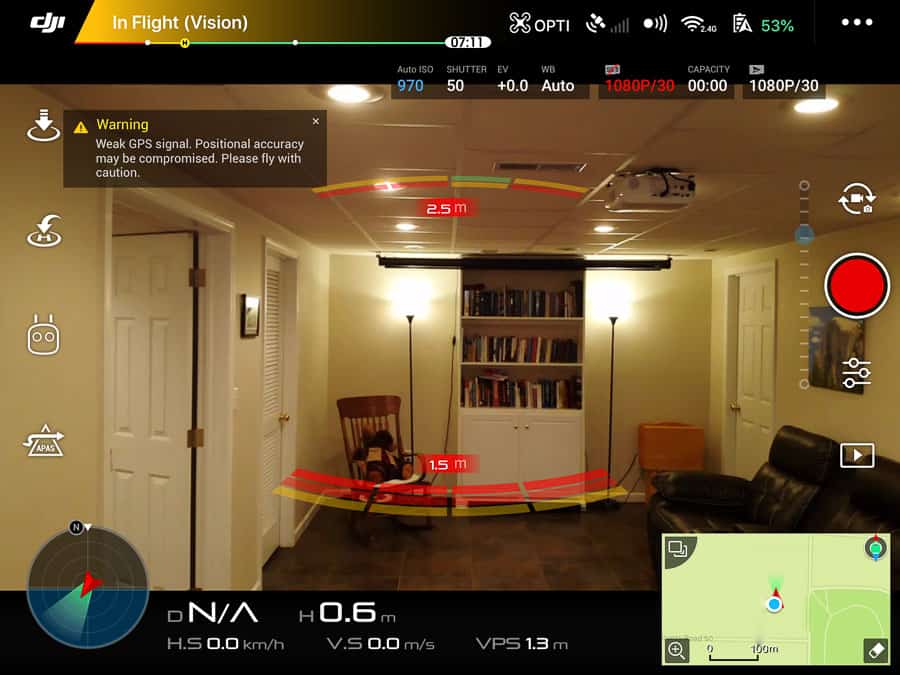
The Bracket Boost
I'm using the DJI Mavic Air, which was released in January of 2018. Rusty Parkhurst has a great review of this drone from earlier this year, which you'll want to check out if you're interested. Lekufee advertises the bracket as compatible with DJI's Spark, Pro, and Platinum, but does not indicate compatibility with the Phantom series of drones.
I also purchased an extension cable for Apple's lightning connector for about $8, since DJI's native connector is too short for this task. I'm ashamed to admit this did not cross my mind when I purchased the bracket. But I can also use it so my wife's iPhone can connect to the charger in the bedroom (synergy!).

Too Much of a Good Thing?
The first thing to note is that the bracket was probably manufactured more with a small tablet, like the iPad mini, in mind. First, the iPad adds a bit of weight to the controller and blocks the user's view of the entire array of control sticks and buttons on the DJI controller. Although Lekufee itself advertises the maximum size as 7.5 inch, its promotional materials show as both a landscape width or a portrait length–meaning so long as the device fits either vertically or horizontally, it can be positioned horizontally. The iPad Air 2 is 9.7 inches high and 6.6 inches wide. So there's only one way it is going to fit.
Conversely, the iPhone 6S is 5.44 inches x 2.64 inches. Since the Lekufee bracket is a minimum 4.72 inches wide, my iPhone can only be inserted between the top and bottom. As an aside, you might wonder why anyone would bother using an iPhone in a bracket raised three inches above the controller when the DJI controller itself already fits the iPhone natively. Why add the extra hardware? I can think of a couple of reasons. First, the DJI controller's native smartphone dock is not always iPhone case-friendly. Second, it can make exterior buttons (like the iPhone's volume buttons) and even the home button and edges of the screen, a real challenge to access. Finally, the bracket is just faster getting the phone it in and out. If you load your smartphone into the DJI controller's native dock for a drone flight, and then get a phone call, good luck getting to it. With the Lekufee bracket, popping it in and out is just quicker.
Bigger Screen = Better Photo Composition
The single biggest upside to using an iPad with the DJI Mavic Air is that it promotes better photo composition. When the generous real estate on the iPad, I can see much more of the image–without the clutter of the drone features getting in the way. This is doubly true if, like me, you're probably one more optometrist visit away from getting bifocals. Drone photography demands more than simply drone flying while pressing a shutter button. If you're a fan of this website and a regular listener to the many podcast iterations of its photographers, you've probably heard the maxim of “Getting it right in camera is always best.” I believe this applies to drone photography, too. I'm still very new to aerial photography. But going forward, I know that having the viewing space of a tablet is a great help for me during composition.
Improved Battery Life
The second advantage of an iPad setup for the DJI Mavic Air is battery life. The DJI Go 4 app is pretty powerful, but it's a battery hog. It saps energy from my iPhone faster than any app I've ever used. If I go out for a flight and my iPhone is less than 65%, I will be flirting with low-battery warnings within 30 minutes or so. Yes, it's that bad. The iPad Air 2 has always been an excellent power-to-performance tool for me, and though the DJI Go 4 app is still busy chipping away at the power, the iPad seems a little more prepared for the challenge. Also, I'm not going to miss an important text or phone call if I have to charge my iPad. I can't say the same for my phone.
Safety-Mindedness
Another advantage that might not seem obvious is safety. The less time I spend squinting at the various icons and menus on the smartphones-sized screen, the more time I can spend having eyes-on the drone. That translates to better safety for my drone and the public generally.
No setup is perfect. Using iPad to fly the Mavic Air has some drawbacks. Although none of these will keep me from continuing to fly with my new setup, it's good to be aware of the shortcomings.
Not case friendly
Say goodbye to the trusty Otterbox iPad case. I'm a bit of a klutz with technology. The first iPad I ever owned lasted less than 72 hours before it suffered a devastating and display-wide crack, spider-webbed across its beautiful face. Ever since I've had my current version, I've used some type of robust protective case or screen cover. I've had the Otterbox on it for a couple of years. But this thick, tough case won't fit the Lekufee bracket. But it's not the added width that's a problem. It's the added thickness — it's too much for the edges of the bracket and causes it to pop out at inconvenient times. Your results might vary with a slimmer case.
Weighing you down
There's no question that the iPad adds some weight and bulk to the hands of the pilot. Though you can put the smartphone-based controller into a large pocket, you can't do that with the Lekufee bracket and an iPad attached. This is not an insignificant trade-off for the Mavic Air, since its unique folding prop arms and travel-friendly size make its compatibility a real selling point for many users. For me, it's worth the sacrifice. But it might not be for everyone.
Conclusion
Drones have become a wonderfully disruptive technology for photographers, particularly in landscape and real estate photography. They offer vistas and angles that were not possible a generation ago without expensive cranes, dangerous poles, or a cousin with poor impulse control who would do anything for $20 and a case of Old Milwaukee. Combining the Lekufee bracket with the controller for the DJI Mavic Air and an iPad is gear synergy personified. It makes it much easier to compose drone shots without the visual clutter of all of the other icons, data, and settings involved in flying the drone.
If portability is the most important part of your drone use, and you're fine with the smaller visual real estate, and with the battery-devouring DJI Go 4 app chewing away at your phone while you're flying, then moving to the larger tablet setup may not be worth it. But if you can handle a little extra weight and bulk, the Lekufee bracket (or one of many similar versions available) may be a good option. It will set you back a reasonable $20 on Amazon.

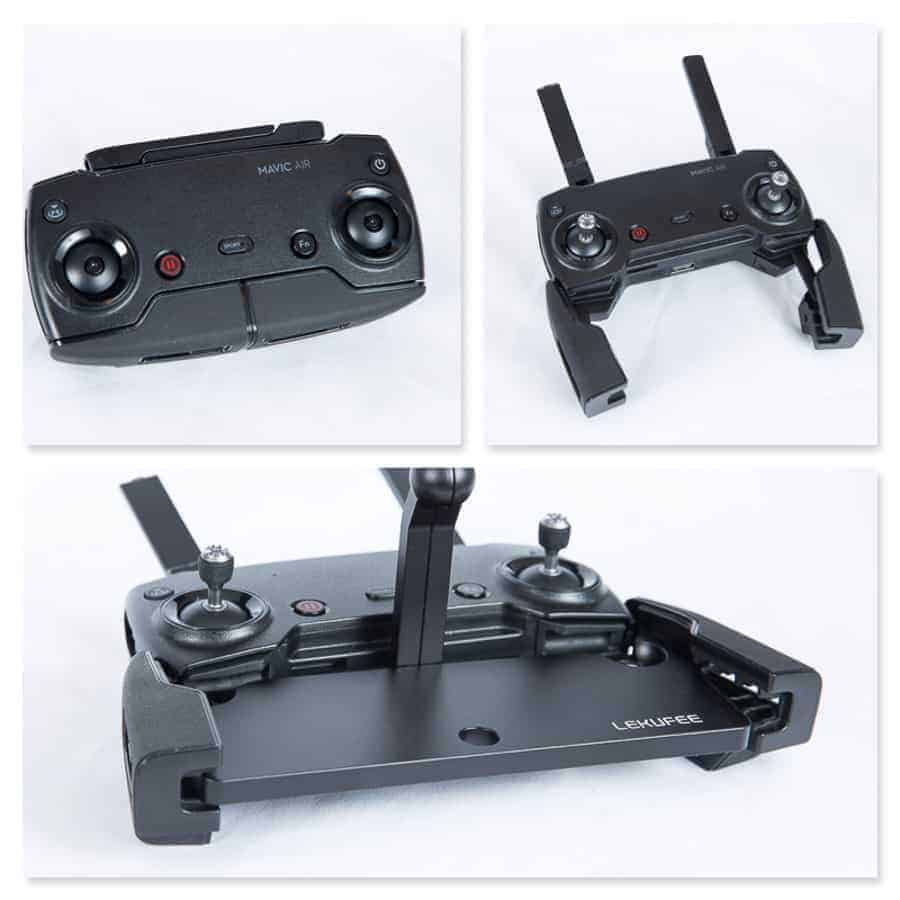
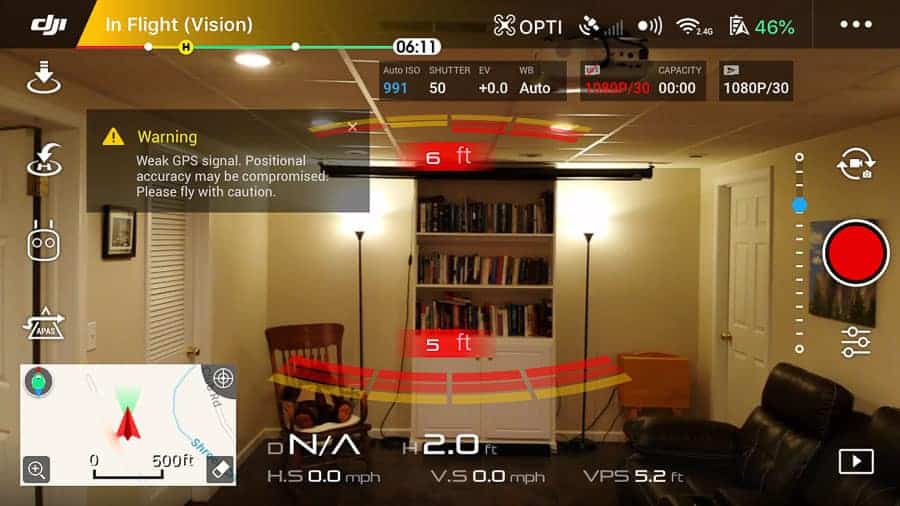
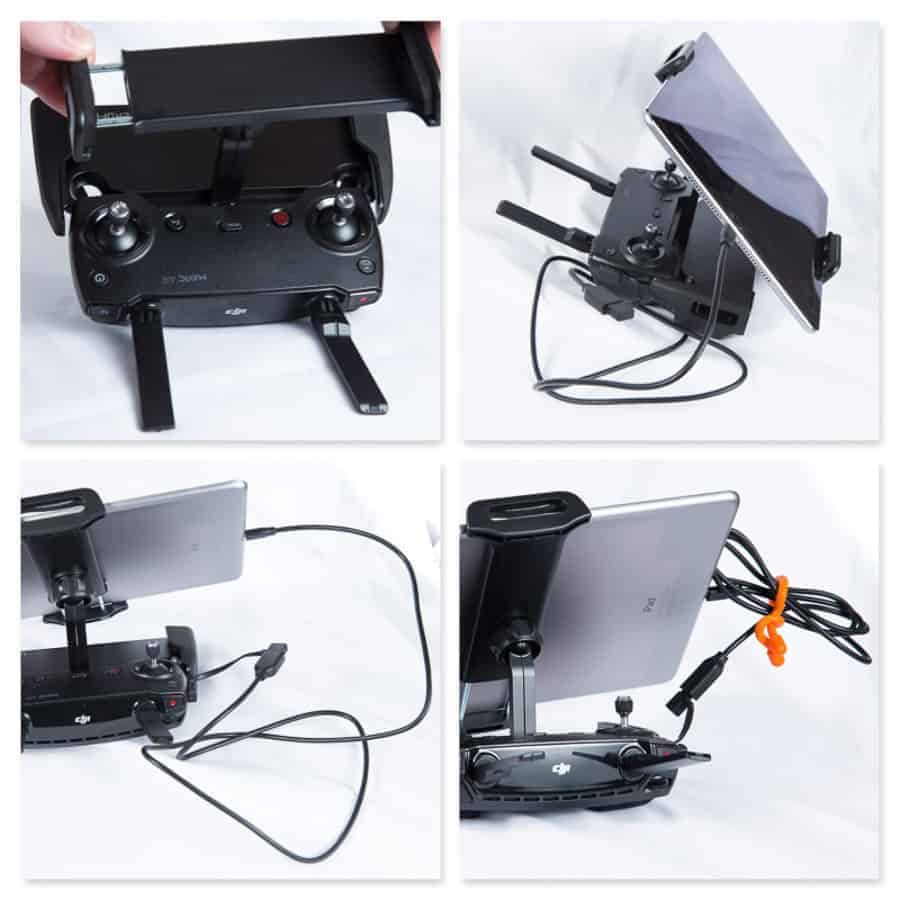
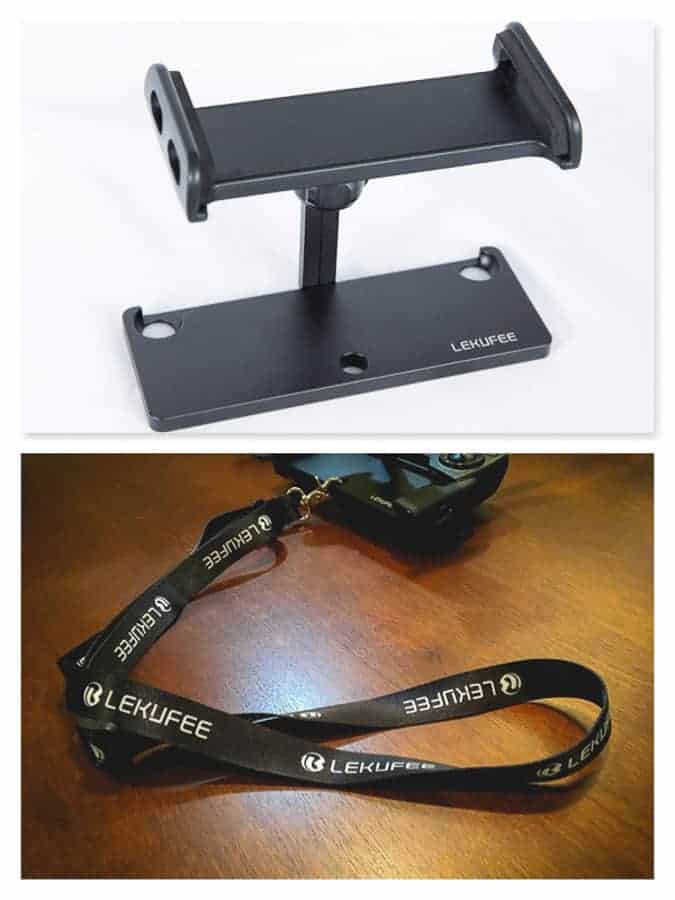
Thanks for the review and I just made the buy. I just came in from a morning flight with my Spark and wrestled with getting my Samsung Galaxy S9+ in the bracket on the remote.
Happy droning, Mike!